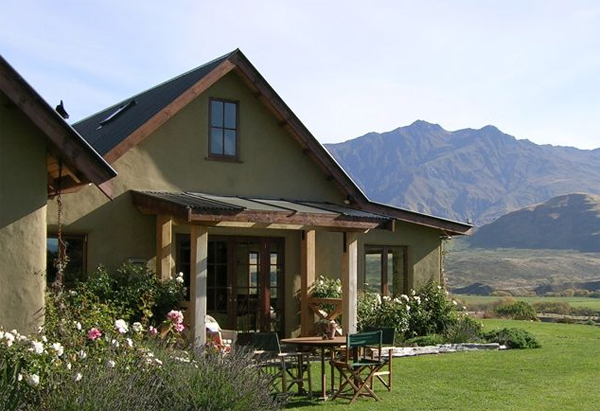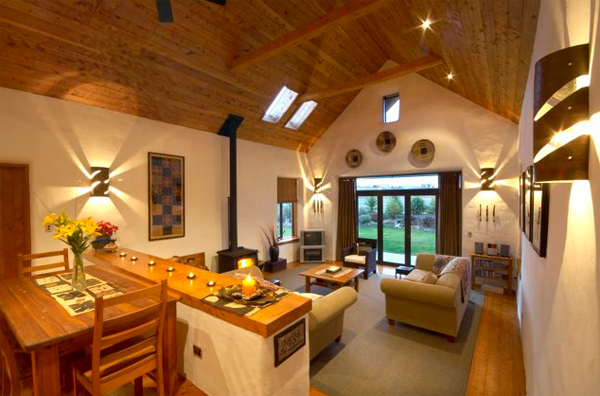
Strawmark built the home in yesterday’s blog post. Be sure to see their stunning gallery.
“Straw houses the way of the future?
With the aftermath of devastation in Christchurch, the focus is now more than ever on safe, affordable, ‘Earthquake’ strong housing.
We are happy to say all our homes within the quake-ravaged area have stood the test, and passed with flying colors, with no damage reported.

Strawmark is, Alan & Karin Cameron. Passionate about quality and producing homes that have soul and integrity. ’Permanence and Performance’ in straw bale construction as their logo says. A small niche market construction company which has become the leader in modern use of straw bale in construction within the Southern hemisphere. Their building system an excellent choice for a wide variety of building applications, from townhouse chic to rural lifestyle, including commercial projects, from golf clubhouses to wineries, restaurants, accommodation and industrial units… Boasting a large number of beneficial attributes including substantial strength against earthquake, fire-safety, energy efficiency, cost and versatility of design.
Strawmark is bale building at its best:
• Thermal Efficient
• Sustainable
• Healthy
• Quiet
• Safe
A personal building Company that you can trust.”

Good points Owen. When I first heard of the quake and all the damage I was very surprised because I had no idea that they had quakes there. Alternative building is the best I believe in regions like this. I too, live in that kind of region and we’re just waiting for a major shake. This house is amazing. Beautiful and, as it’s been proven, very strong.
He has a problem that every builder would love to have — how to keep up with so many orders. I imagine some new strawbale companies will pop up in the area.
This is a big story. As most here probably know, Christchurch was hit with a major earthquake in 2011. This was a tragedy but also an opportunity to demonstrate the earthquake resistance of strawbale and earthbag buildings. The important thing now is to educate local builders on these stronger, more sustainable building methods. One builder, no matter how good they are, can never meet the demand if thousands of people want to build this way.